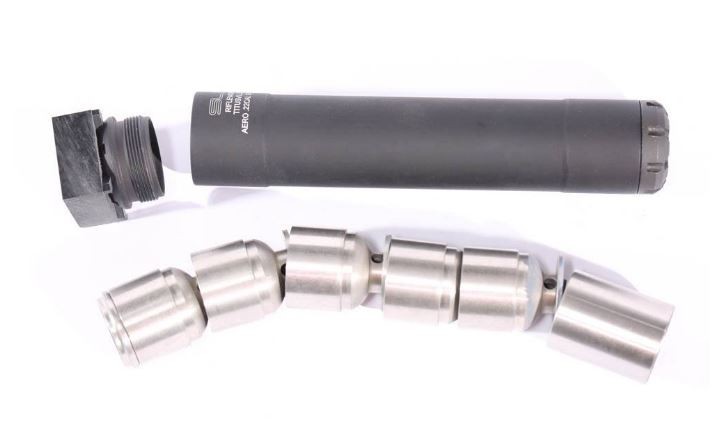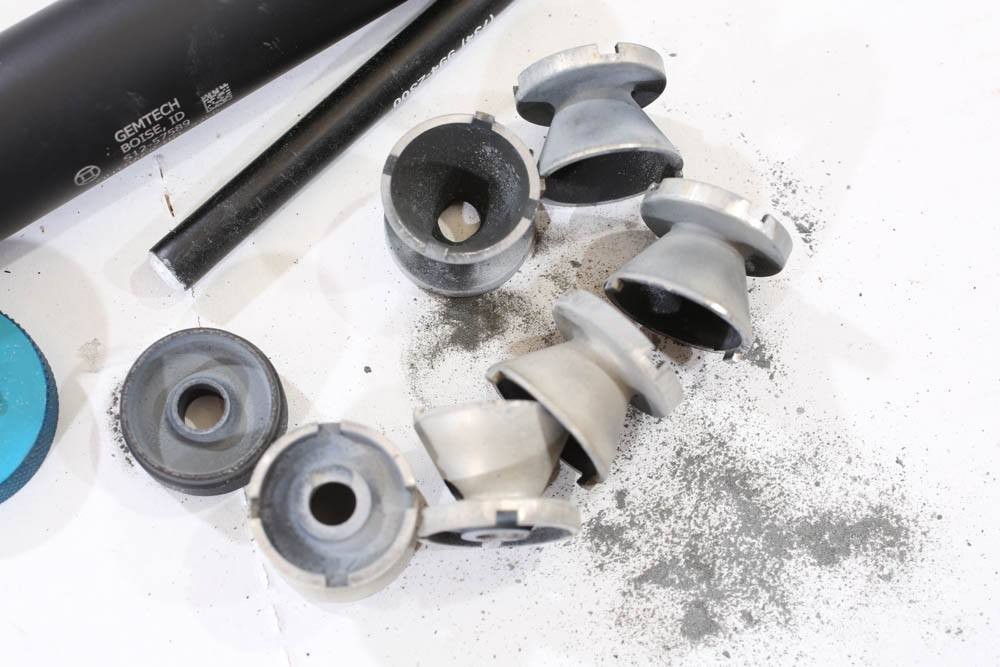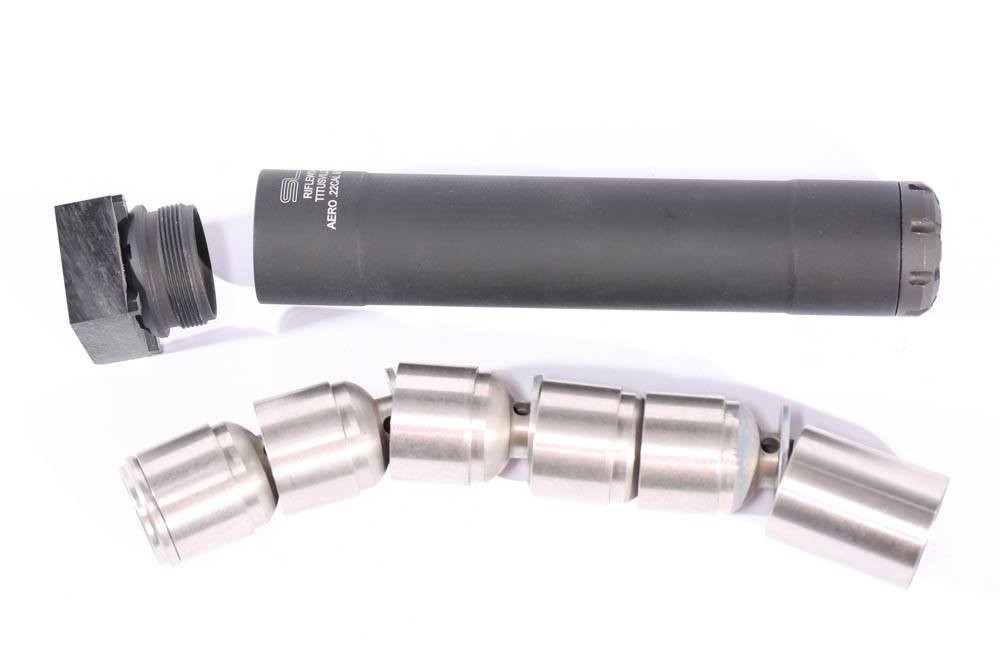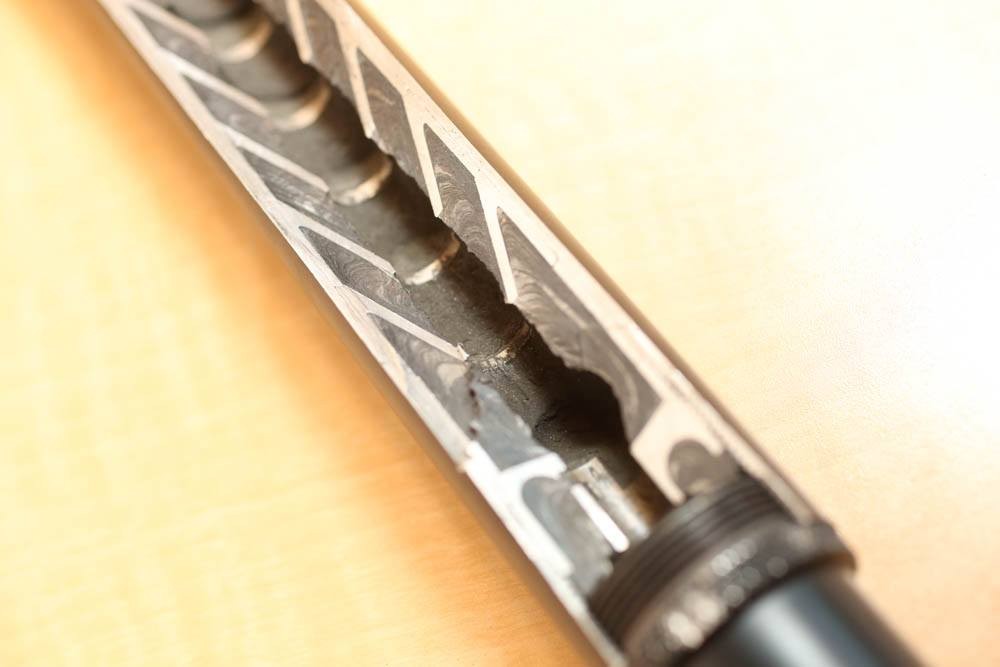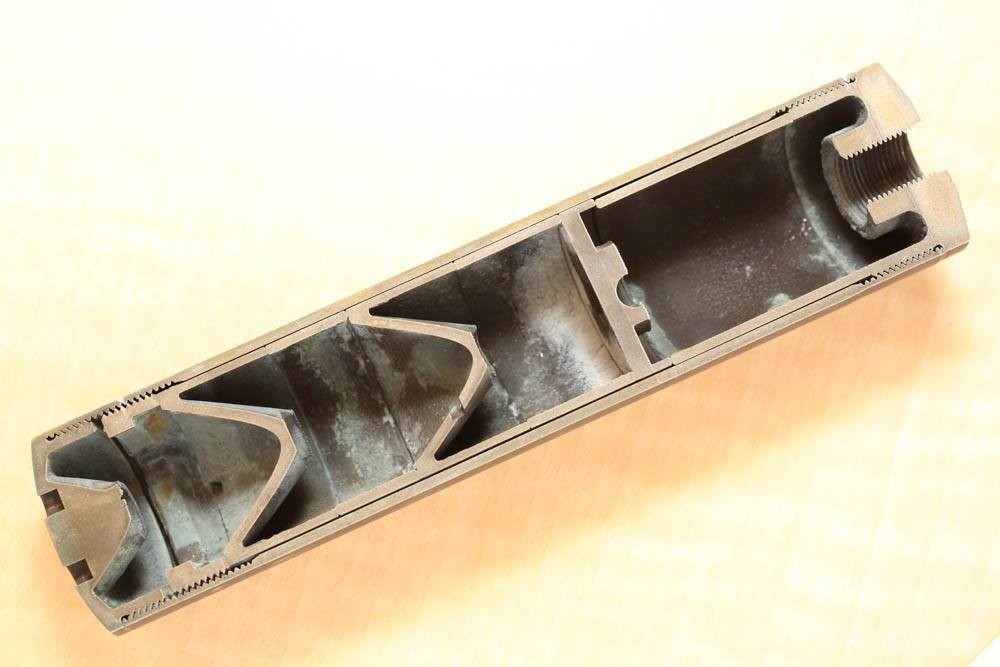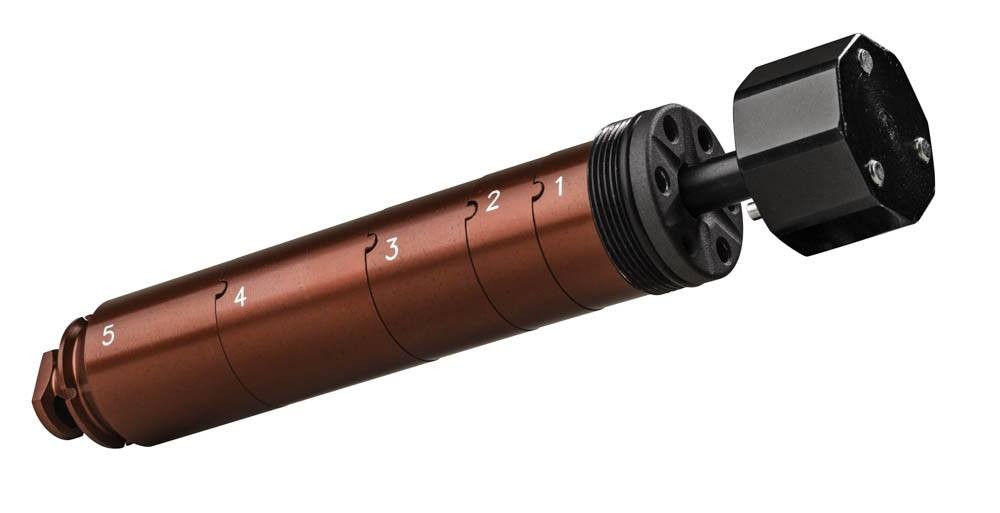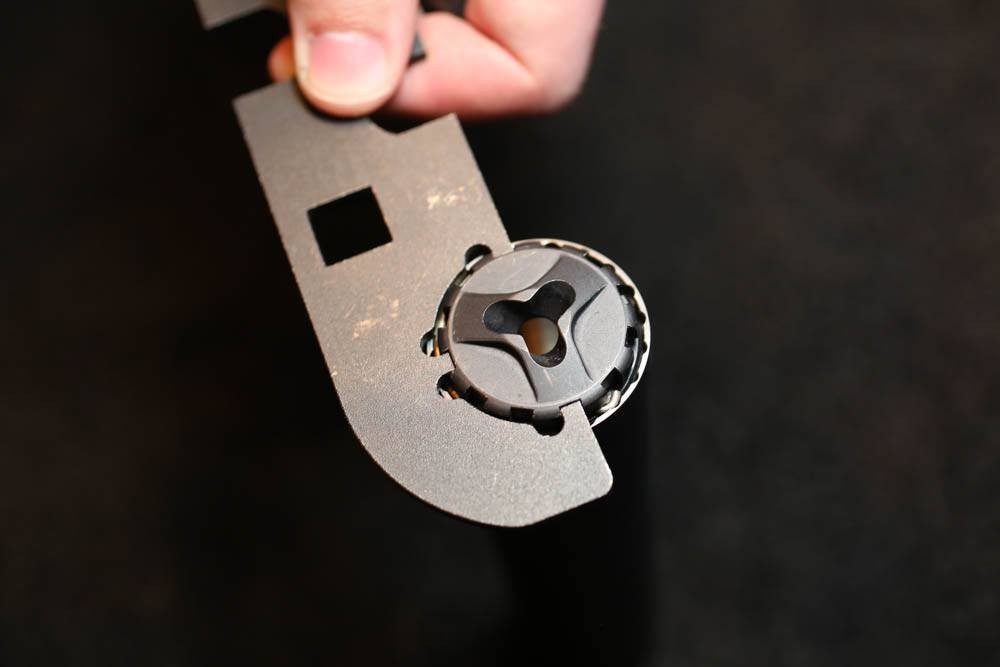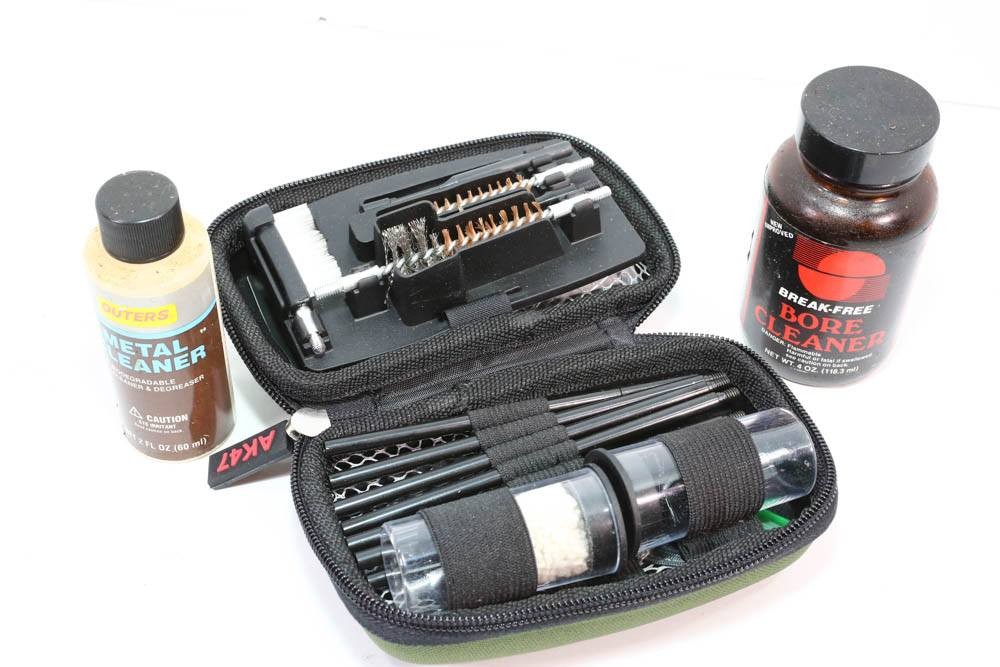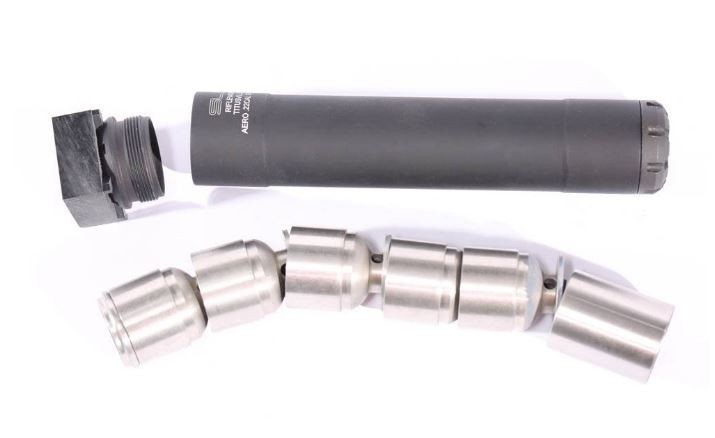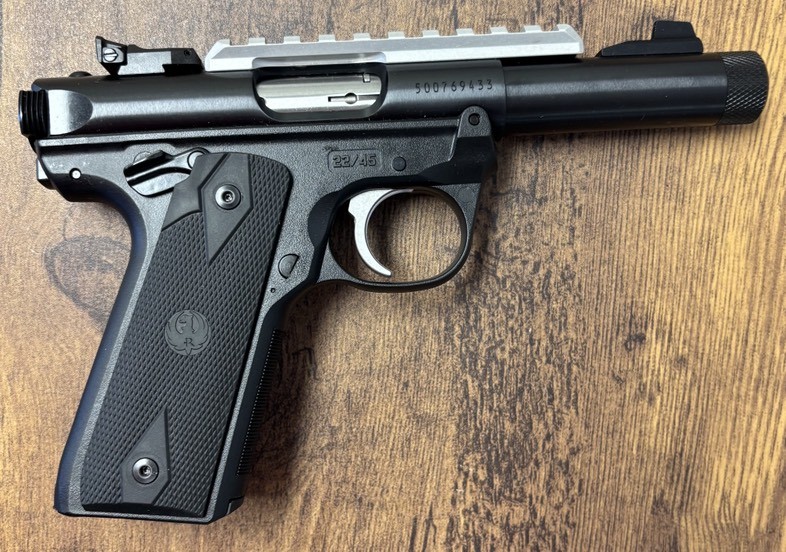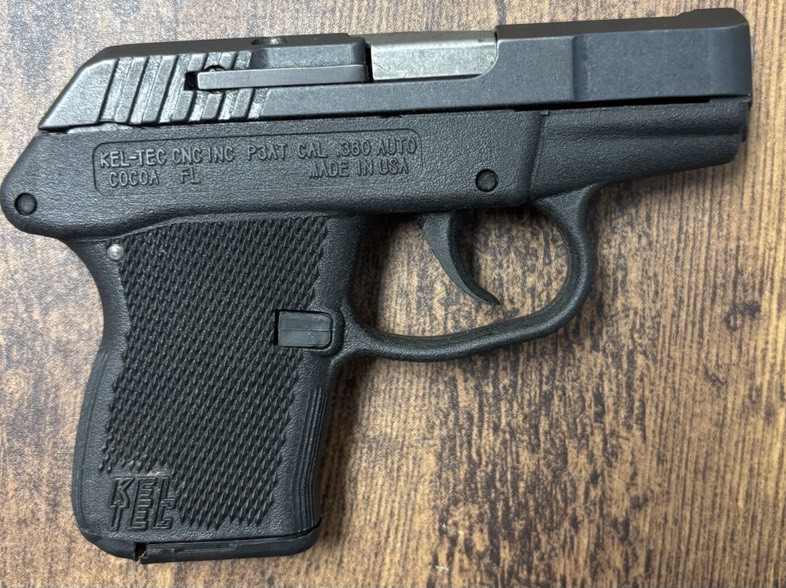Disassembling and Cleaning a Suppressor
At a bare minimum for cleaning your #suppressor , you will need a plastic bristle brush, cleaning patches, (I’d suggest a roll of paper towels as well), #cleaning solvents for powder and lead residues, and gloves. Gloves? Yes, you will be handling the baffles or monocore directly, and in rimfire and #handgun calibers the residues will have a good dollop of lead in them. One might even be tempted to use the pun “a healthy dose” of lead. Keeping that stuff off your hands is a good idea, even if you diligently wash up afterwards, because it will take a lot of washing.
Every design is different. Some are threaded on the front cap, some on the rear, some on both. One thing you can be certain of is this: the manufacturer will have either included a special wrench with the suppressor, or designed one or both of the caps to accept a standard open-end wrench. Before you start, make sure you have all the cleaning equipment on hand – solvents, brushes, patches, gloves, etc. – and proceed. Apply a few drops of penetrating oil to the joints of the front and or rear caps. These could be Kroil, Liquid Wrench, or whatever your favorite loosening liquid might be. While those drops soak in, assemble the tools you’ll need.
Use the provided wrench, or an open-end wrench if that is the appropriate tool, and remove the cap or caps. In the case of a baffle stack design, you will probably find the baffles wedged in tightly. Use a section of wooden dowel to push them out. You can find this at the local hardware or big-box store, and you’ll probably have to buy a three-foot section of it, for a couple of dollars. Choose one that’s a diameter that will fit inside of the tube, not to tight, but not so small it will flew. A dowel 3/4 inch will do for most sizes, but a quick check on yours will let you know what the maximum size yours can take. You can also use a similarly sized section of PVC pipe. While you’re there, also pick up a section of doweling, or PVC, that will be a snug but not tight fit down the center hole of the baffles. Don’t take the baffle with you, measure the ID of the hole, write it down, and get a dowel at the store.
The way to remove the baffle is not necessarily straightforward. To remove the baffles, place a shop rag or old towel on your workbench or the floor. Place the rod, standing up, on the towel, put the suppressor minus its caps on top of the rod, and grasp the tube. Push the tube down over the rod, pushing the baffles out of the tube. (Some suppressors might be directional, that is, the baffles go out only one way. Again, read the instructions.) If you try to hold the tube in one hand and push the rod with the other, you end up not pushing the baffles out. When the alignment goes off-center enough, you can hurt yourself as you push one hand into the end of the suppressor tube. The correct method will cause the baffles to pop up out of the tube and spill out onto the towel/bench/floor.
Getting all the baffles to stack correctly, and keep them there while you slide them into the tube, can be a hassle. This is especially true if the baffles have index tabs or interlocking edges. This is where your smaller-diameter dowel comes in handy. Assemble the baffle stack over the dowel, keeping the tabs in their slots. Then, you can hold the assembly all in one stack, and slide the stack, with the dowel, into the tube. Once in place, with everything nestled correctly, you can pull the dowel out and screw on the caps.
